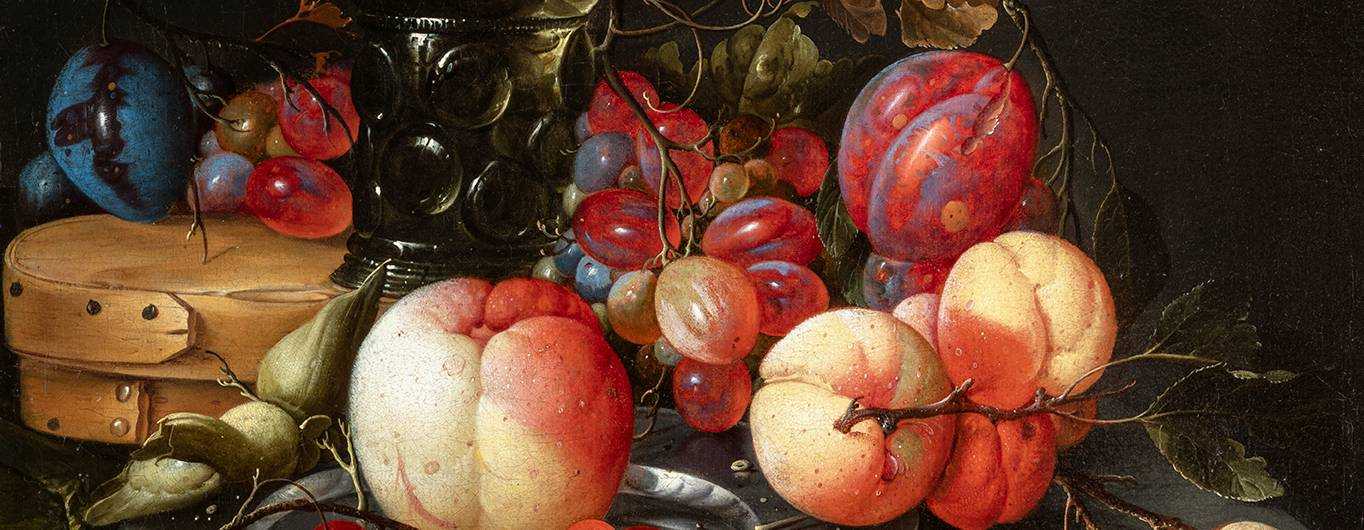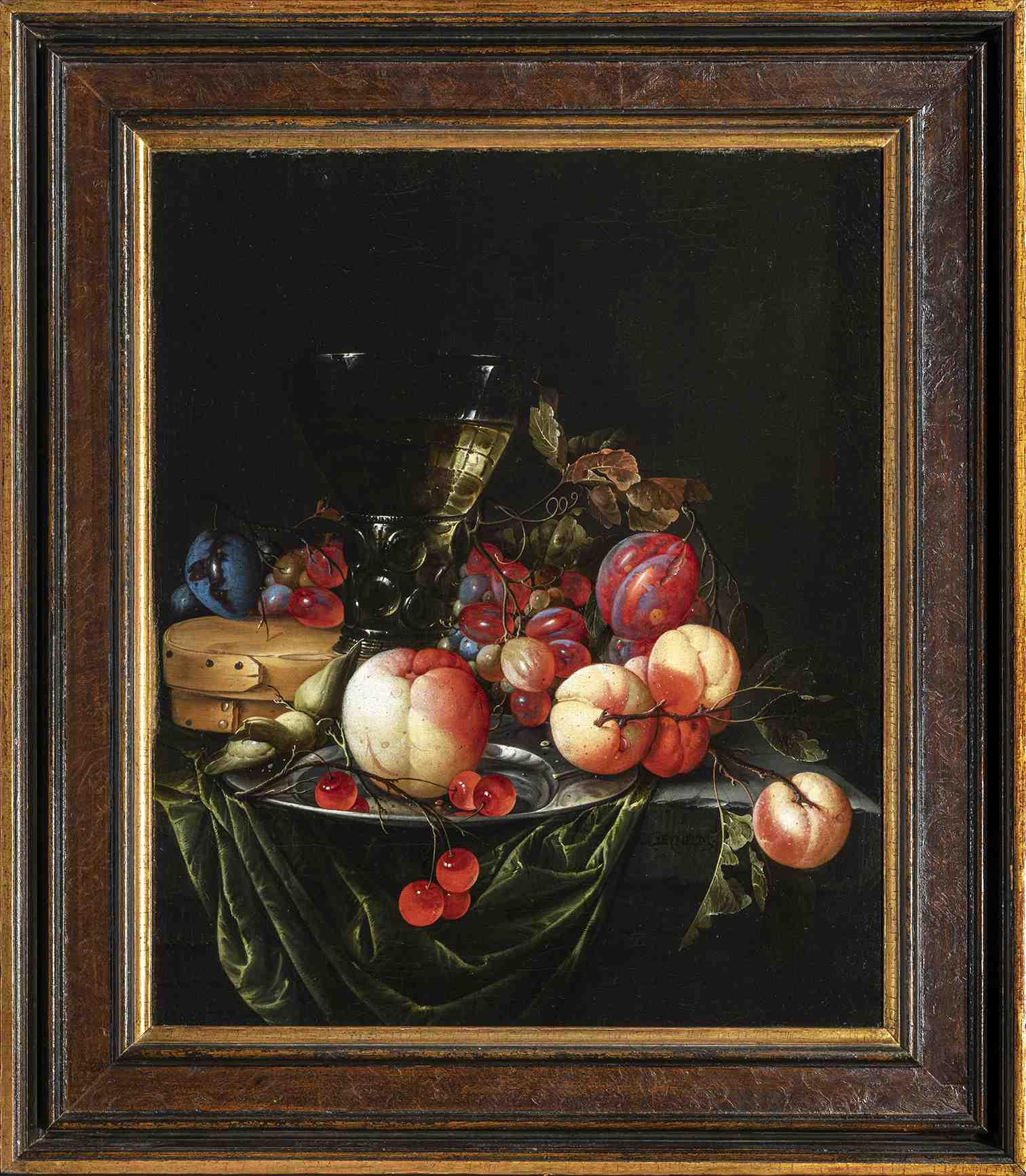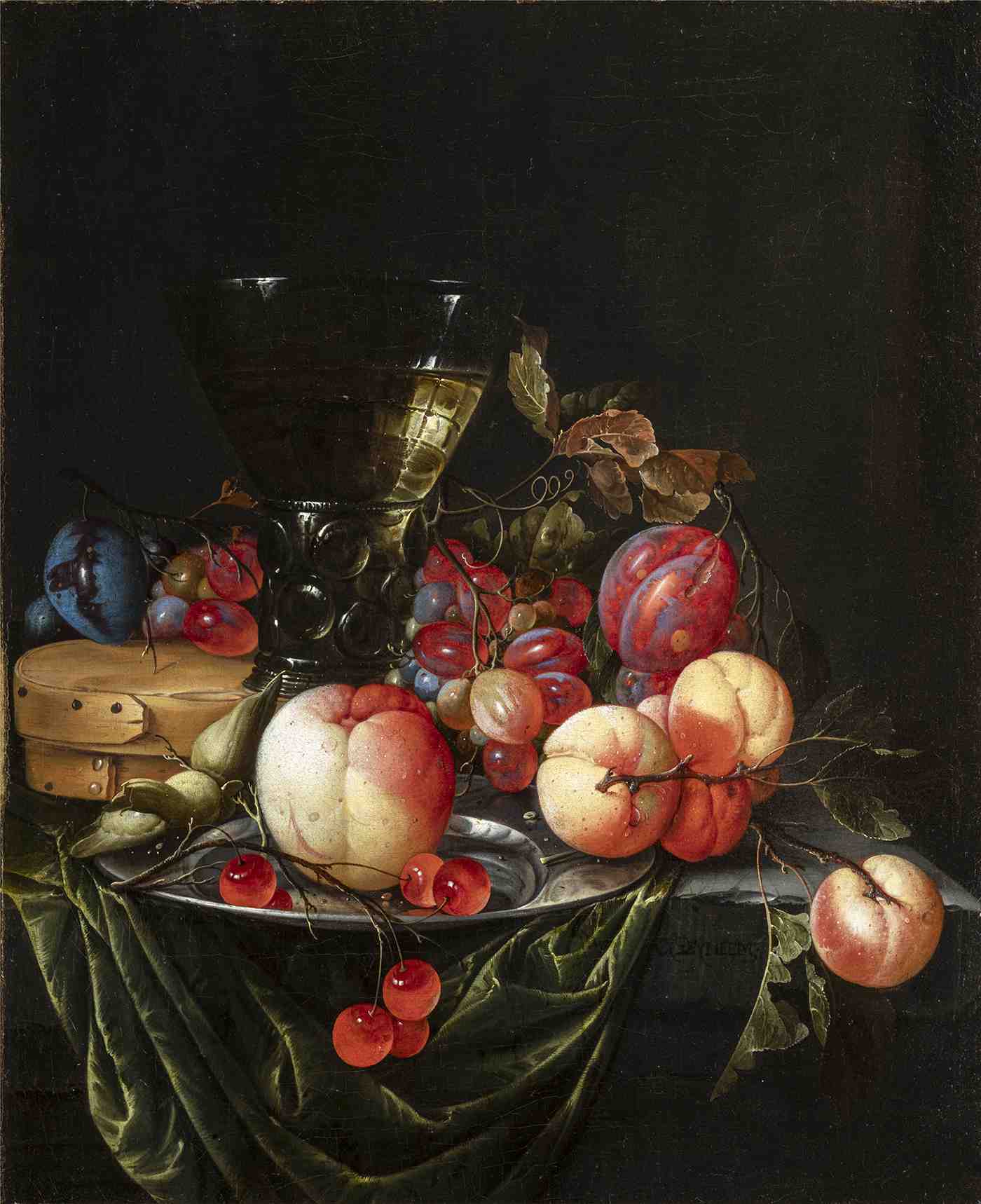Cornelis de Heem
Leiden 1631 - Antwerp 1695
Still Life with Peach, grapes, plums and cherries in a pewter plate, on a stone ledge.
Oil on Canvas, 45 x 38 cm
Signed on the stone ledge: C. De Heem
Provenance
T.W. Ward, London (1935);
Christie’s, London, 22 November 1935, no. 114;
W. Sabin;
Captain E.G. Spencer Churchill, Northwick Park (1963);
His sale, Christie’s, London, 29 October 1965, lot 51, reproduced;
J. McGowan;
Sotheby’s, London, 10 July 1974, lot 48, reproduced;
Sotheby’s, New York, 11 June 1981, lot 32, reproduced;
Christie’s, New York, 15 January 1988, lot 109, reproduced;
Norbert Pokutta, Munich (1988).
E.G. Spencer Churchill, The Northwick Rescues 1912-1961, 1961, p.6 no.13;
I.Bergström, La Natura Morta Stranieri nelle Collezioni Privati Bergamaschi,1971, under no. 26;
Certificate Dr. Sam Segal, Amsterdam, 5 February 1991: confirming the attribution to Cornelis de Heem.
Exhibition
Centre International de Paris, VII Biennale Internationale, 3-20 October 1974, p. 316m, reproduced;
The Collector’s Cabinet. Flemish Paintings from New England Private Collections, Worcester (Massachusetts), Worcester Art Museum, 1983/84, pp.68-9, no.17, reproduced.
Additionnal Information
Cornelis de Heem (8 April 1631 was born into a large family of painters specialized in still-life. The De Heem family moved to Antwerp in 1636 where it appears Cornelis was trained by his father, Jan Davidsz. De Heem (1606-1684), who like him, was born in the Dutch Republic but lived worked and died in the Southern Netherlands. Like his father Cornelis was a still-life painter associated with both Flemish Baroque and Dutch Golden Age painting of the second half of the 17th century. Still-life compositions of the 2nd half of the 17thcentury became increasingly flamboyant and frivolous deviating from the more restrained subdued still-life paintings of the early pioneers such as Clara Peeters, Pieter Claesz. and Willem Claesz. Heda.
At times it is not easy to distinguish the works of the numerous members of the De Heem family, which included his brother Jan Jansz., nephew Jan Jansz. II, and son David Cornelisz. (1663–after? 1718), who all painted mostly flower and fruit pieces in a similar style and probably often collaborated. Cornelis's works, however, tend to be small, display a preference for strong blues, and, over time, shifted away from the painterly style preferred by his father.
De Heem’s use of brilliant colours against a dark background successfully stresses the jewel-like quality of the fruits in the foreground. The composition is thoughtfully contrived, with the red plum, for example, precariously balanced on the apricots on the right. This deliberate artificiality is typical of the direction still life painting took in the Netherlands during the second half of the seventeenth century.



 Facebook
Facebook
 Twitter
Twitter


 Gmail
Gmail


